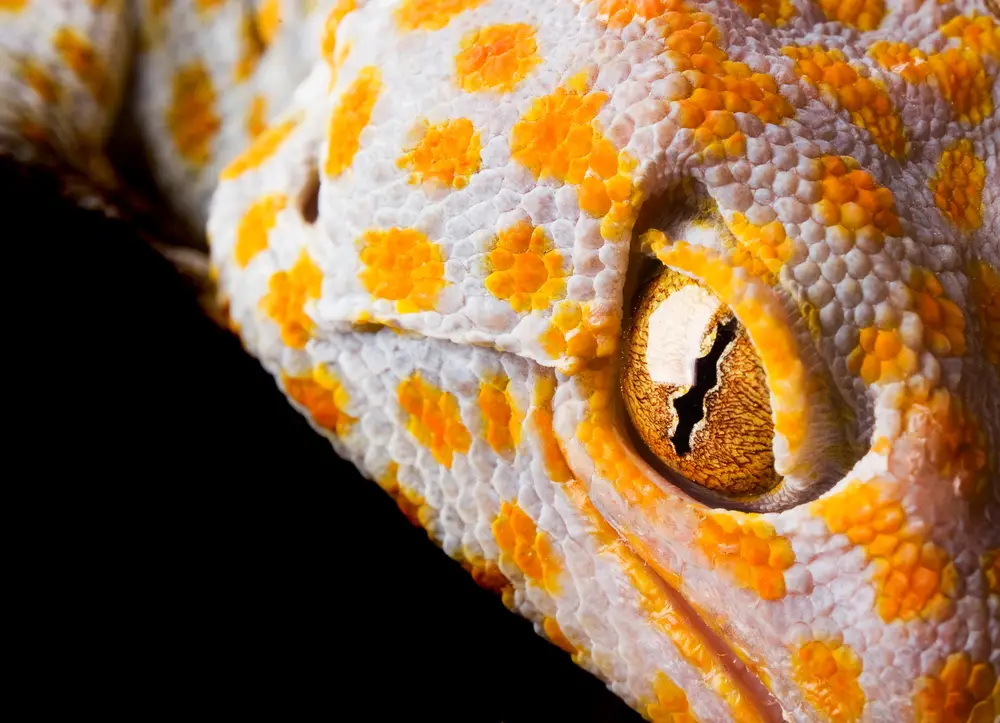For those who are brave and committed enough to care for a tokay gecko at home, there are some things to be aware of when it comes to their changing colors. This beautiful Asian and Pacific Island gecko is known to change color for camouflage and to indicate certain moods, which we’ll be exploring today.
Aside from changing color to camouflage themselves, tokay geckos are also known to change their skin into darker colors when they are under stress, cold, or angry. On the other hand, calmer moods and warm temperatures often lend to lighter colors such as light green, blue, or white.
Keep reading to learn more about the specific situations, moods, and reasons that tokay geckos change different colors. We’ll even answer some frequently asked questions at the end. Let’s get into it!
Tokay Gecko Changing Colors
While it may seem alarming to an uneducated gecko owner, changing this creature’s skin color from time to time is entirely normal. The tokay gecko will change colors for a variety of reasons, including the following:
- Shedding skin
- Changing mood
- Changing temperatures
- Environmental stress
- Blending into the environment
One of the most common reasons your tokay gecko might be changing colors (changing to light or dark colors) is that it camouflages itself for protection. But it’s also not abnormal for a tokay gecko to change color as its mood changes or it gets too cold.
Why Do Geckos Change Colors?
It’s important to note that many gecko species change colors under different circumstances; it’s not a quality limited merely to the tokay gecko. And the answer lies in the reasons outlined above – camouflage, shedding skin, and environmental changes like stress and temperature.
Below, look at some of the reasons geckos change into specific colors, from dark to light.
Tokay Geckos Turning Dark Colors
Typically, if your tokay gecko changes colors from light to dark, it’s not a great sign. This means that your gecko is probably uncomfortable or under some stress at that time.
Tokay geckos typically turn dark colors when they are:
- Under newfound or increased stress (this is typical when you first bring home a tokay gecko or acclimate it to its new environment, and it will likely go back to normal with time)
- Cold (tokay geckos, like other cold-blooded animals, which means that they thrive in warm conditions)
- Angry or unhappy (they may be feeling this way due to stress, feeling cold, or other uncomfortable environmental factors)
Dark colors on a tokay gecko often present dark blues and sometimes an almost black shade.
Sometimes, the colors may change to become brighter or more vivid, such as when the tokay gecko is active.
Tokay Geckos Turning Pale Colors
In other cases, tokay geckos can change their skin color from regular (spotted blue-gray coloring) to pale green, blue, or white. This change in skin color indicates different moods, environmental stressors, and more, including the following:
- The tokay gecko is warm (when this gecko is warm enough, its color will lighten up)
- The tokay gecko is calm and happy
- The gecko is sleeping (in this case, the pale colors may present as dull purple or gray)
- The gecko is shedding skin (skin will change to a dull color)
Final Thoughts
If you’ve ever wondered why is my tokay gecko changing colors? Then hopefully, our guide has cleared things up. While it’s normal for these creatures to change colors in different environments and as they shed, darker colors tend to indicate that the gecko is cold, stressed, or unhappy.
FAQs
What kinds of geckos change color?
It’s not uncommon for geckos to change color in certain situations, the most common examples being tokay geckos, Moorish geckos, crested geckos, and gargoyle geckos. In some cases, changing skin color for a gecko is as simple as maturity or age.
Why is my gecko turning gray?
Usually, if a gecko’s skin starts to turn gray or a color similar to gray, it indicates that they are about to shed a layer of skin. White skin on a gecko can also signify that shedding will occur soon.




